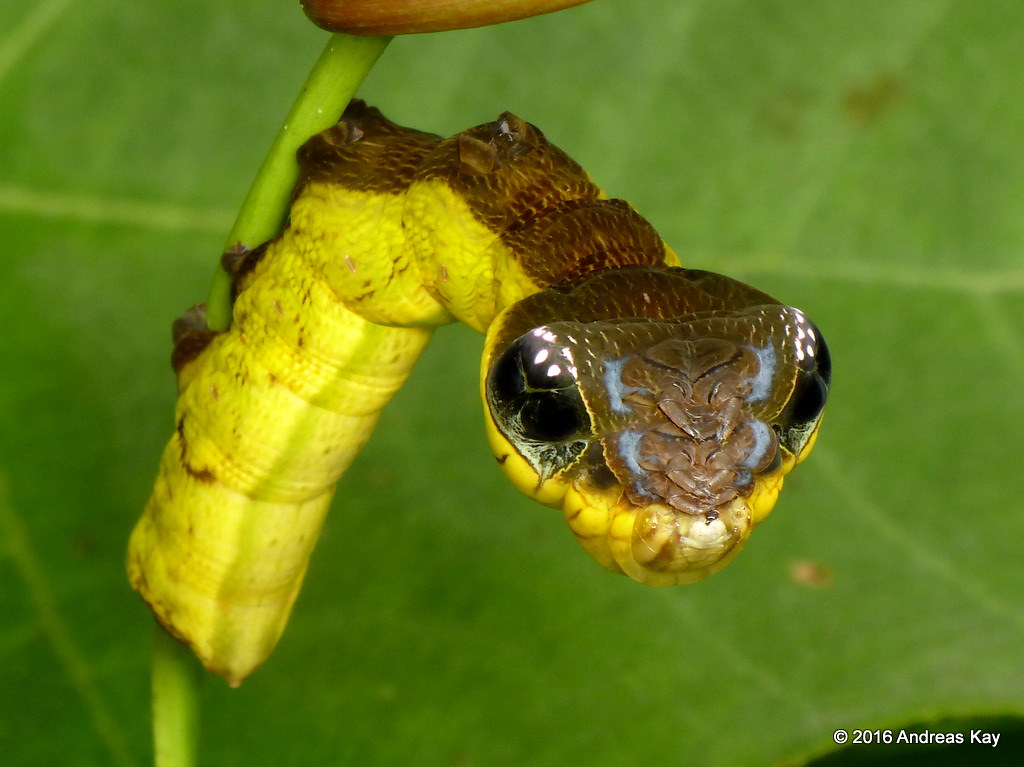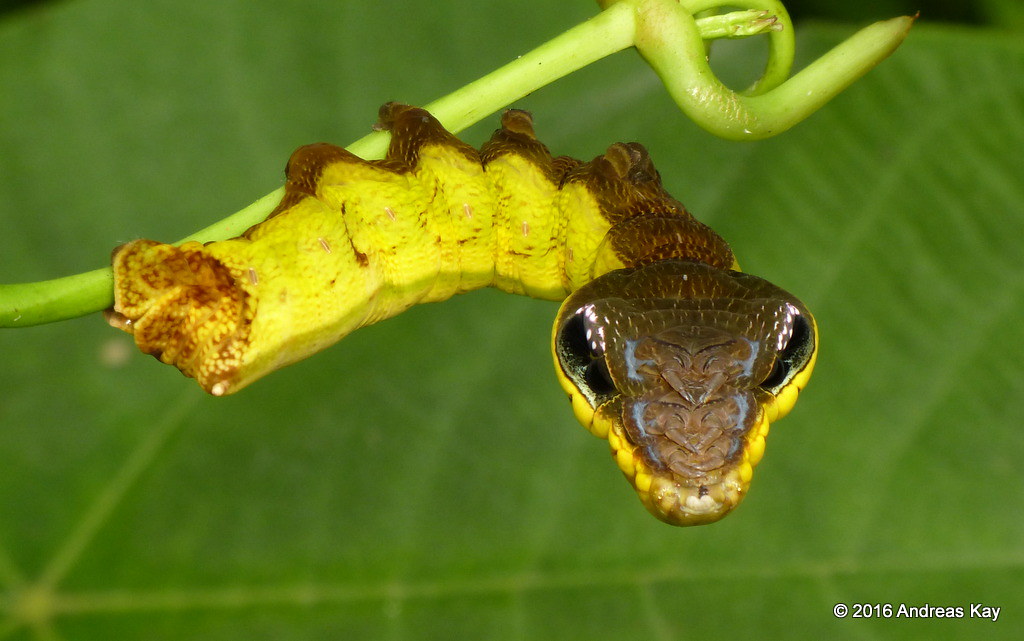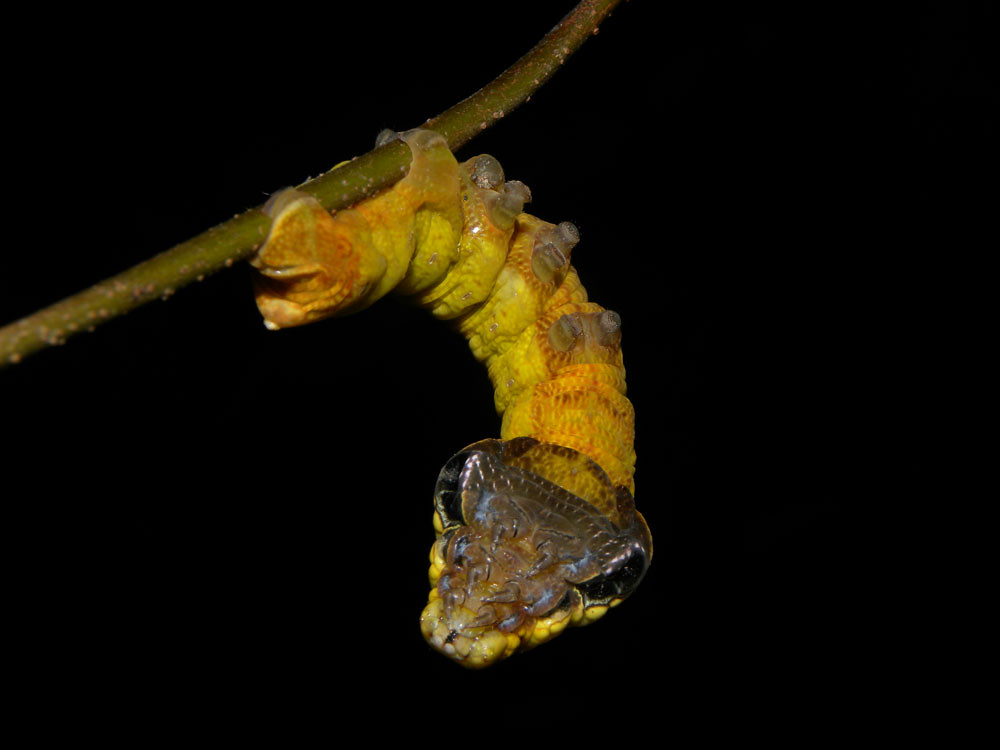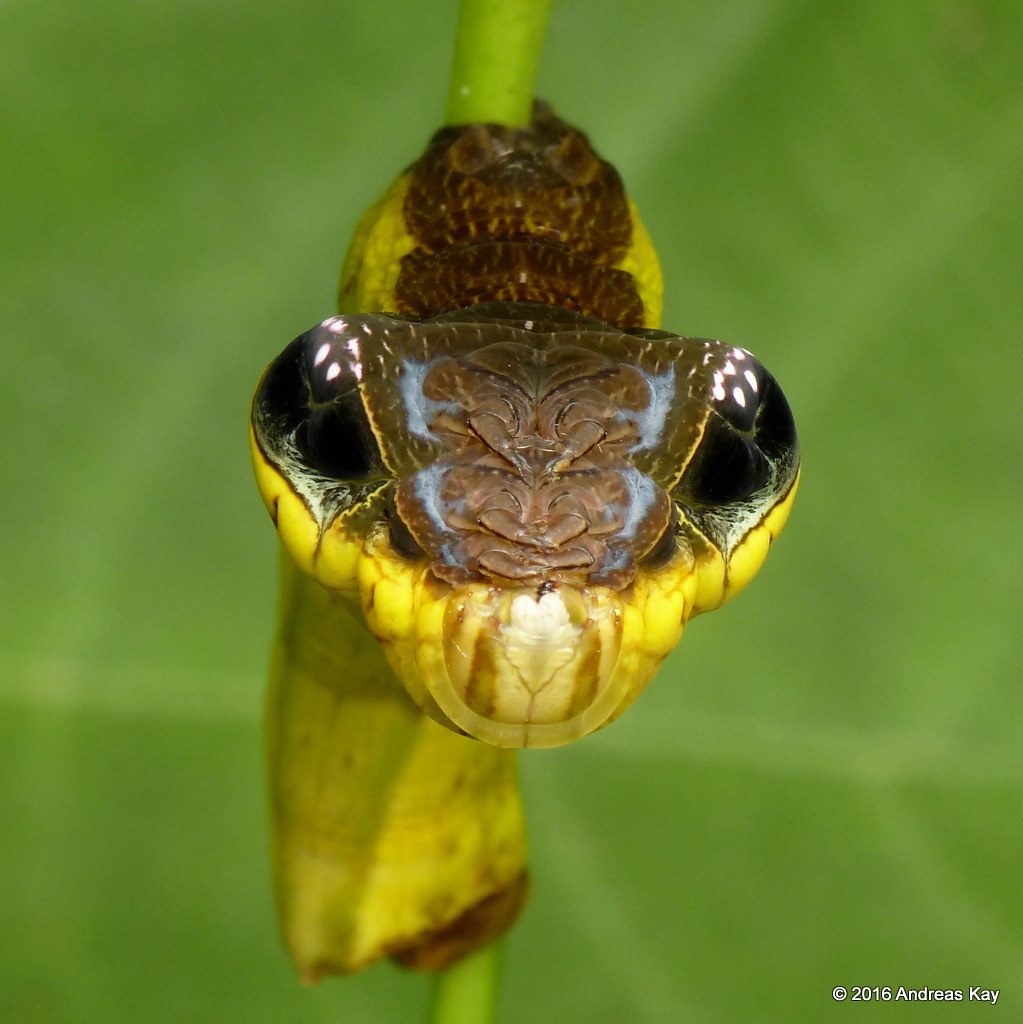Ladies and gentlemen, the award for best invertebrate imitation goes to Hemeroplanes triptolemus for its masterful imitation of a venomous snake!

Photo: Andreas Kay
Native to the Amazon rainforests, the snake mimic caterpillar turns into an unimpressive moth of the Sphingidae family, but in its larval stage it incorporates an astonishing survival tactic. It needs one, too, as without a good defence system, sphinx moth caterpillars are essentially energy-rich ‘nom-nuggets’ presented on a bed of green leaves to jungle predators.
To avoid that fate, the larva of this moth expands and exposes its underside to mimic a snake’s head with black eyes and even light reflections.

Photo: Andreas Kay
It’s no easy feat, though. The caterpillar begins its defensive maneuver by lunging backward and twisting its body to expose hidden shades of yellow, white, and black on its underside. It then sucks air in through tiny holes in its sides (known as spiracles) and pumps them out the front of its body. Once the segments inflate, the caterpillar truly transforms, taking the form of a venomous snake complete with a diamond-shaped “face” and large black eyes.
If the “deadly” (and quite expensive) disguise is not enough to deter a predator, such as a lizard or bird, the caterpillar might also attack like a snake to enhance the effect.
[embedded content]
Although misdirection, a tactic that involves using eyespots to divert predators’ attention away from the head, is not uncommon among animals, the snake-mimicking caterpillar’s false face actually falls on the same extreme as the real thing.
“Deflection may not work well for a caterpillar because the caterpillar probably won’t survive if an attacker punctures or tears off some part of its body,” explains eyespot expert Dr. Thomas Hossie. “This defense is all about intimidating or scaring an attacker who will flee (or fly) rather than risk a lethal encounter with a snake.”

Photo: Andreas Kay

Photo: Reinaldo Aguilar





